University Reflection: Professional Identity in Nursing (NUR1202)
VerifiedAdded on 2022/10/10
|5
|1190
|245
Journal and Reflective Writing
AI Summary
This assignment presents a student's reflective analysis of a nursing case study, focusing on the development of professional identity. The student utilizes the "What, So What, Now What" model to critically examine a scenario involving a registered nurse's interaction with a patient and their partner. The reflection highlights ethical dilemmas, particularly concerning patient-centered care, cultural sensitivity, and assumptions made about relationships. The student contrasts their approach with that of the nurse, emphasizing the importance of clear communication, respect for patient autonomy, and awareness of ethical codes. The analysis delves into the impact of the nurse's actions on the patient's emotional well-being and treatment, linking the case to the student's personal and professional development. The 'Now What' section outlines the student's commitment to adopting a patient-centered approach, improving communication skills, and acknowledging ethical challenges within the nursing profession. The reflection underscores the significance of cultural competence and the ethical considerations that impact patient outcomes.
1 out of 5
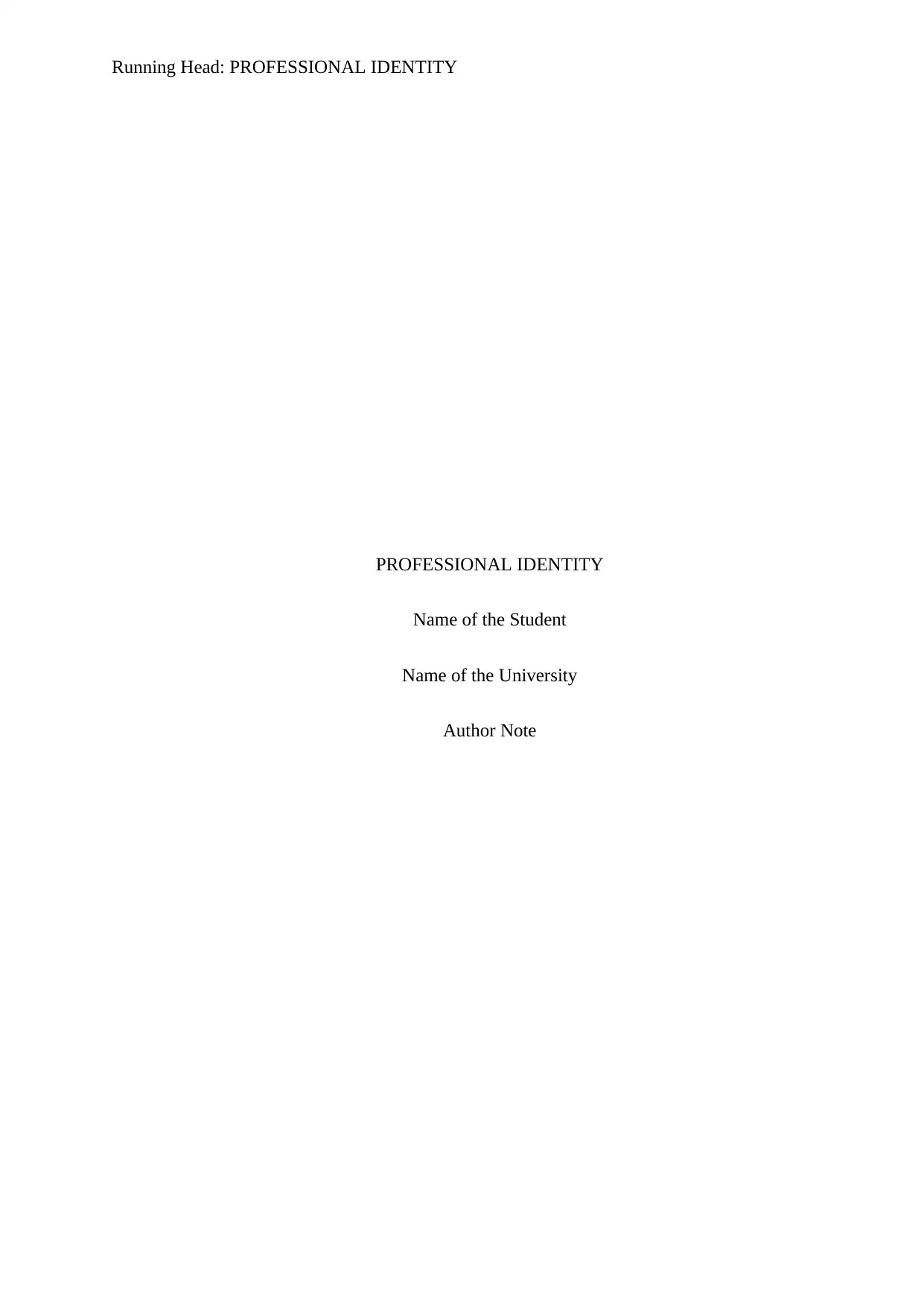
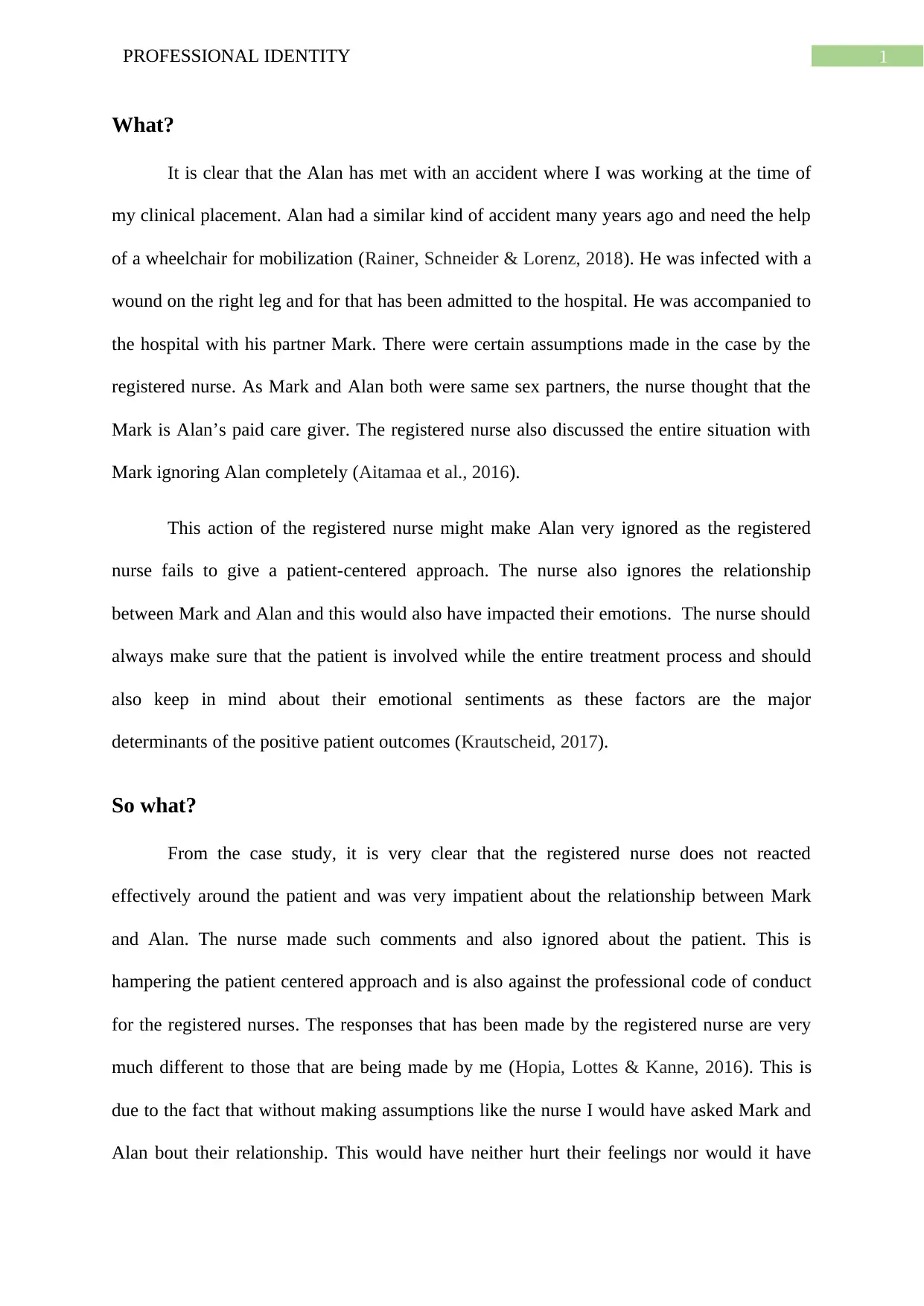
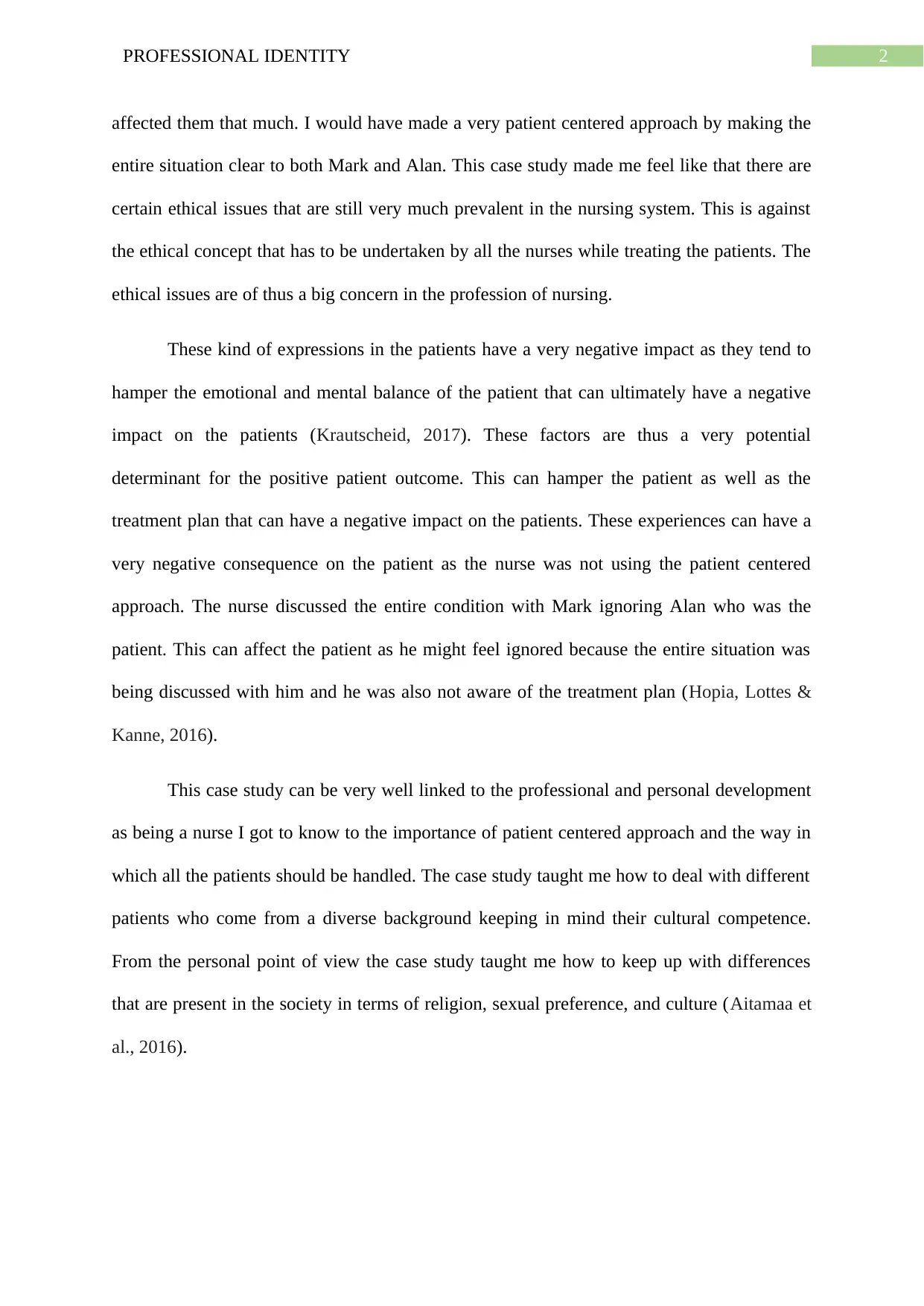

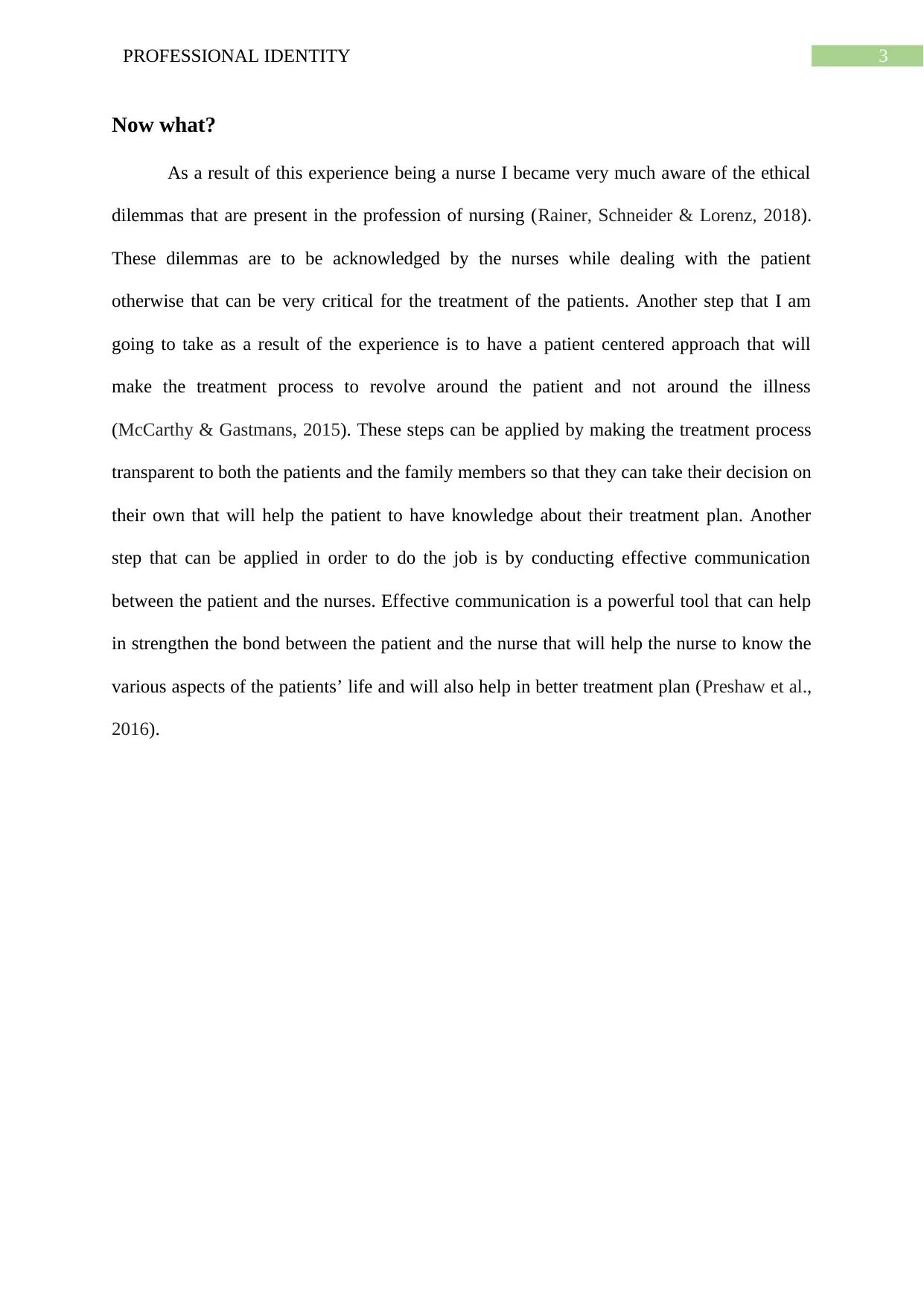
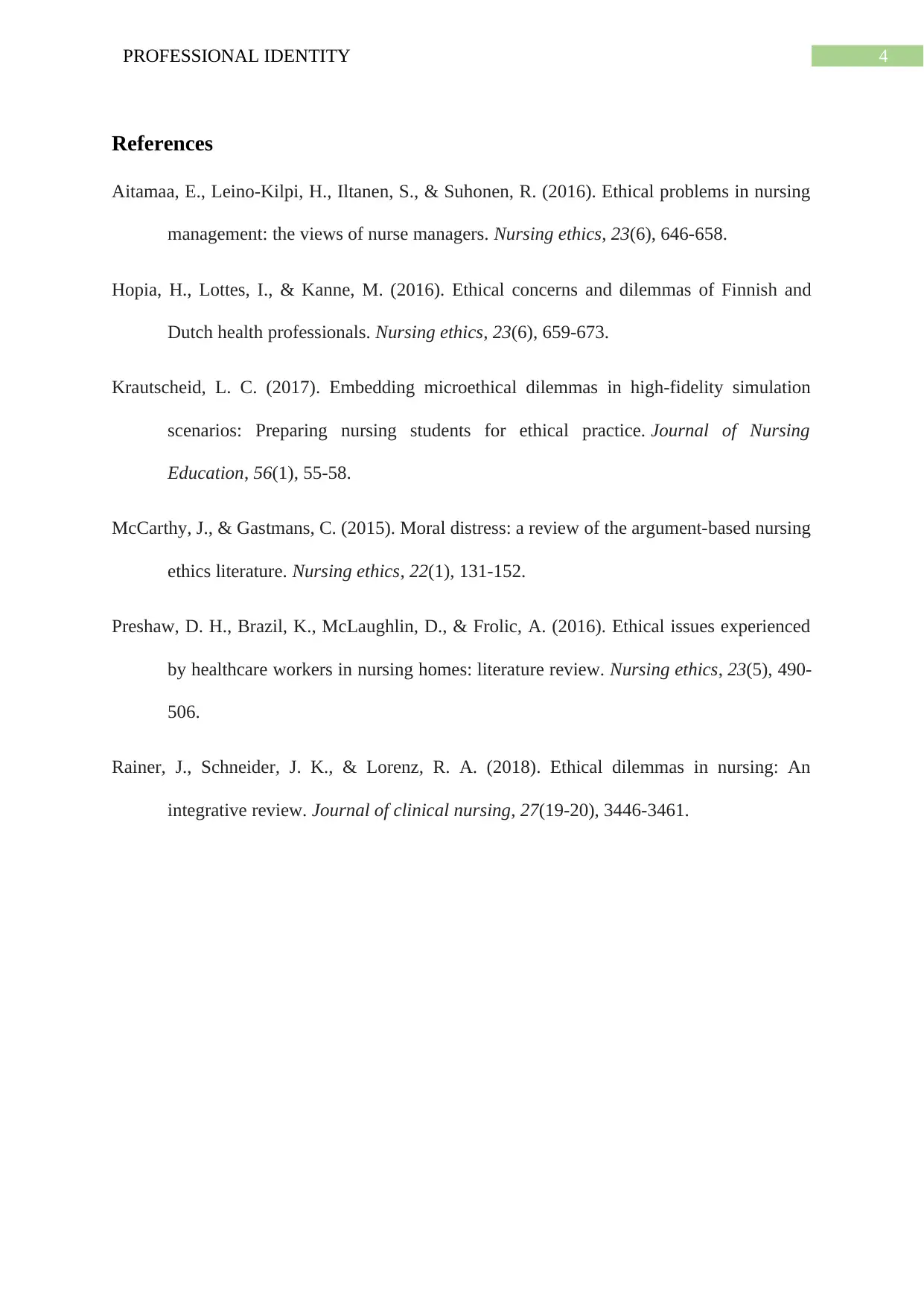






![[object Object]](/_next/static/media/star-bottom.7253800d.svg)